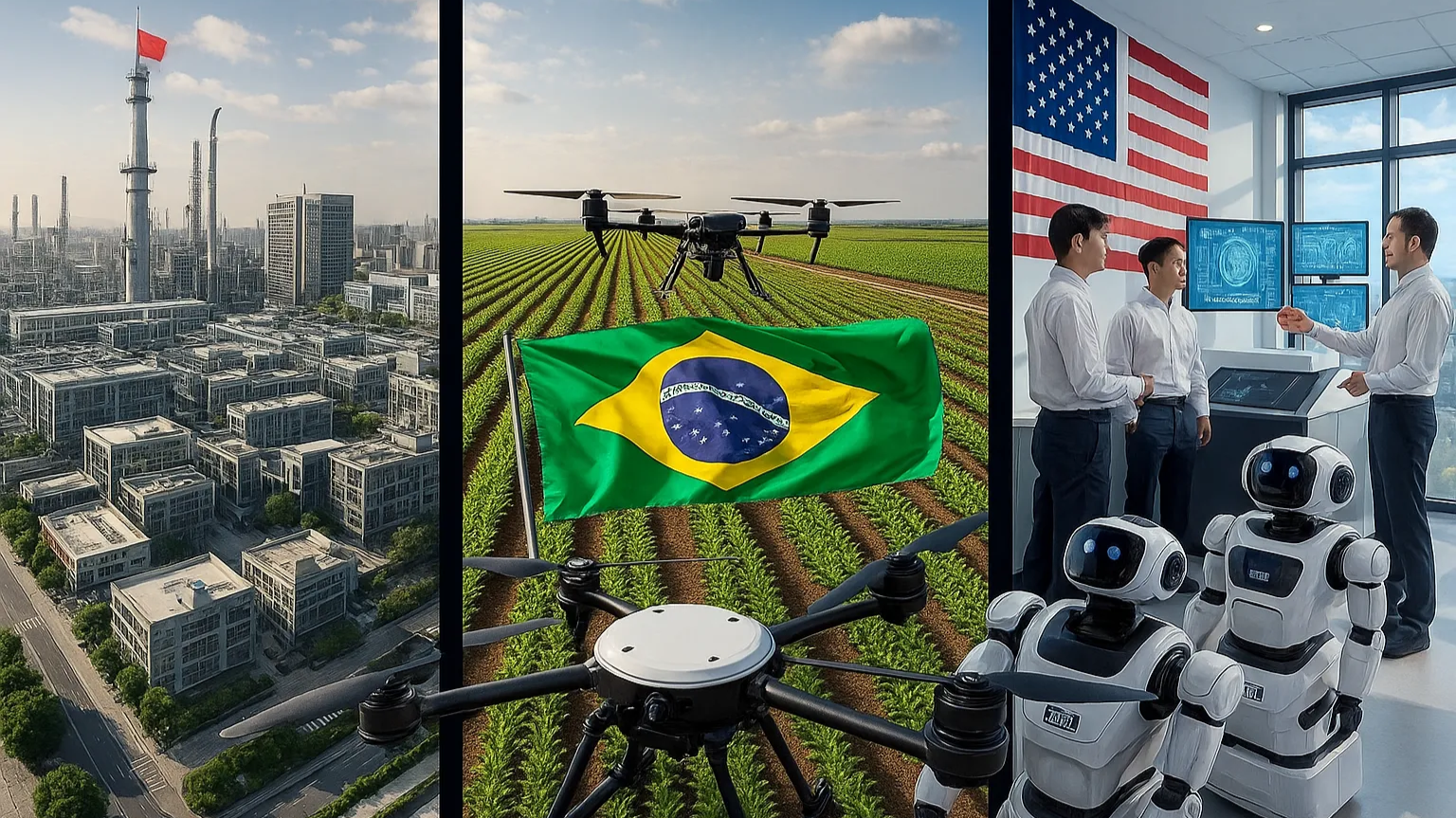Comparative Use of AI in the Job Market: USA, China, and Brazil
Imagine a future where robots and humans work side by side, transforming professions and creating new opportunities. That future has already begun. Countries like the USA, China, and Brazil are shaping the impact of artificial intelligence (AI) in the workforce in unique ways. In this article, we explore how AI is redefining the future of work, highlighting trends, challenges, and opportunities in each nation.
Global AI Job Market Overview
The impact of AI technology on the labor market has grown exponentially since 2020. Recent data shows that 85% of global companies plan to implement automation solutions by the end of 2025. This shift is transforming required skills, job nature, and organizational structures.
It’s estimated that 85 million jobs will be displaced by 2026 due to human-machine collaboration. However, 97 million new roles are expected to emerge, adapted to the future of work. This scenario varies across economies, making it essential to compare global powers and emerging markets.

USA: Innovation and AI Leadership
- Advanced automation: 65% of large firms use AI, with 35% productivity gains.
- Reskilling: $30B invested yearly in workforce upskilling.
- Flexible regulation: Agile laws promote fast innovation.
- Human-machine collaboration: 72% of businesses use hybrid models.
In healthcare, AI increases diagnosis accuracy by 40%. In finance, algorithms process 75% of transactions, reducing fraud by 60%.

China: National Strategy and Rapid Development
- State-driven policies: Centralized government investments.
- Scale automation: 78% of manufacturing industries use AI (vs. 45% global avg).
- Massive data: Access to vast datasets for algorithm training.
- Skilled talent: 185,000 AI experts trained yearly — twice the US.
With 200 million surveillance cameras, China uses AI for facial recognition. In manufacturing, 40% of manual jobs are replaced by robots.

Brazil: Opportunities and Challenges
- Limited adoption: 68% of large companies use AI, focused on finance (45%) and agribusiness (28%).
- Technology inequality: SMEs face access barriers.
- Legal uncertainty: Brazil’s AI strategy under development.
- Talent gap: Only 25,000 AI professionals trained annually.
In finance, chatbots handle 60% of customer service. In agriculture, precision farming boosted productivity by 30%. For example, Maria, a farmer in Mato Grosso, doubled her yield using AI.

Comparison Table: AI Adoption
| Category | USA | China | Brazil |
|---|---|---|---|
| AI Investments (2024) | $120B (40% of global) | $110B (37%) | R$8B (~$1.5B, 0.5%) |
| Companies using AI | 83% large, 45% SMEs | 78% large, 38% SMEs | 42% large, 12% SMEs |
| Jobs impacted by 2026 | 12M | 15M | 3.8M |
| AI professionals/year | ~90,000 | ~185,000 | ~25,000 |
Future Trends
- Selective automation: 60% of jobs will have 30% of tasks automated by 2030.
- Economic inequality: Countries like Brazil may widen the competitiveness gap.
- Ethical regulation: Effective AI laws will be key; USA is liberal, China centralized, Brazil in transition.
Conclusion
AI in the workforce reveals sharp contrasts. The USA innovates rapidly, China grows with strategy, while Brazil must speed up to close the competitive gap. Finance and agriculture show promise, but require coordinated policy, talent development, SME incentives, and clear regulations.
FAQ
Which country leads AI investment?
The USA leads with $120B invested in 2024, followed closely by China with $110B.
What is Brazil’s biggest challenge in adopting AI?
The lack of trained professionals and legal uncertainty are Brazil’s main hurdles.
How does AI impact employment?
AI transforms jobs rather than simply eliminating them. Millions of new roles are expected to emerge globally.
References
- McKinsey & Company. The State of AI in 2024: Gen AI and Beyond. 2024. Available at: https://www.mckinsey.com
- World Economic Forum. The Future of Jobs Report 2023. 2023. Available at: https://www.weforum.org
- Brazilian Ministry of Science, Technology and Innovation. Brazilian AI Strategy. 2021. Available at: https://www.gov.br

